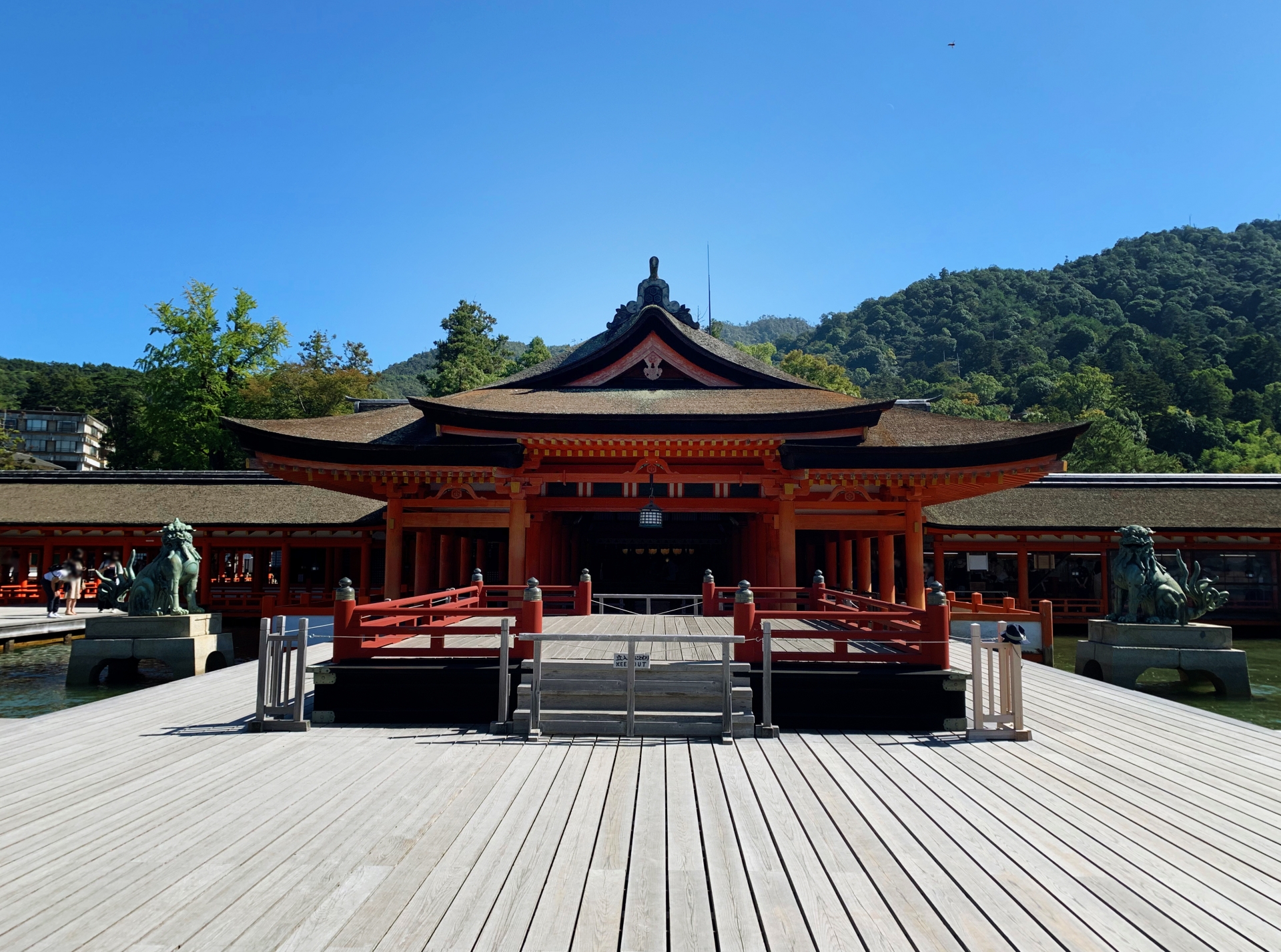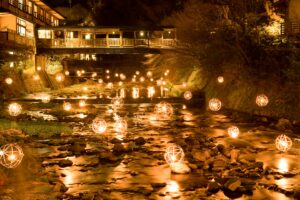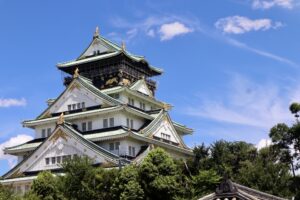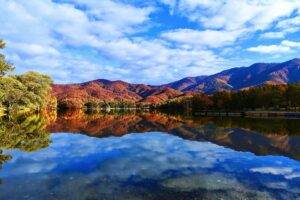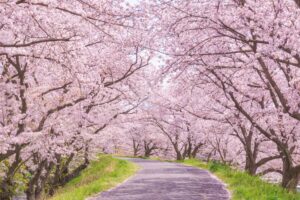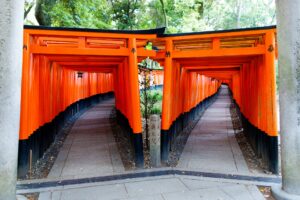Itsukushima Shrine, located on the picturesque island of Miyajima, is one of Japan’s most iconic landmarks. Known for its “floating” torii gate, this Shinto shrine is rich in cultural history and scenic beauty. Whether you’re a history buff, a photography lover, or simply planning your Japan itinerary, this comprehensive guide will help you explore the shrine, understand its heritage, and enjoy everything Miyajima has to offer.
What is Itsukushima Shrine?
Itsukushima Shrine, located on Miyajima Island in Hiroshima Prefecture, is one of Japan’s most revered Shinto sites. Founded in 593 AD and later remodeled in its present grandeur in 1168 by the powerful Taira no Kiyomori, the shrine reflects Japan’s deep-rooted connection between spirituality and natural beauty. Dedicated to the three Munakata goddesses—deities of the sea and storms—Itsukushima Shrine served as a protector of maritime activities and a sacred place of worship for centuries.
The entire island of Miyajima was considered so sacred that commoners were not allowed to set foot on it, which is why the shrine was constructed over water on stilts, allowing worshippers to approach by boat. In 1996, Itsukushima Shrine was designated a UNESCO World Heritage Site for its cultural significance and exceptional preservation of Shinto architecture. The shrine’s elevated wooden corridors, vermilion-lacquered pillars, and seamless harmony with its natural surroundings exemplify the pinnacle of Japanese architectural aesthetics.
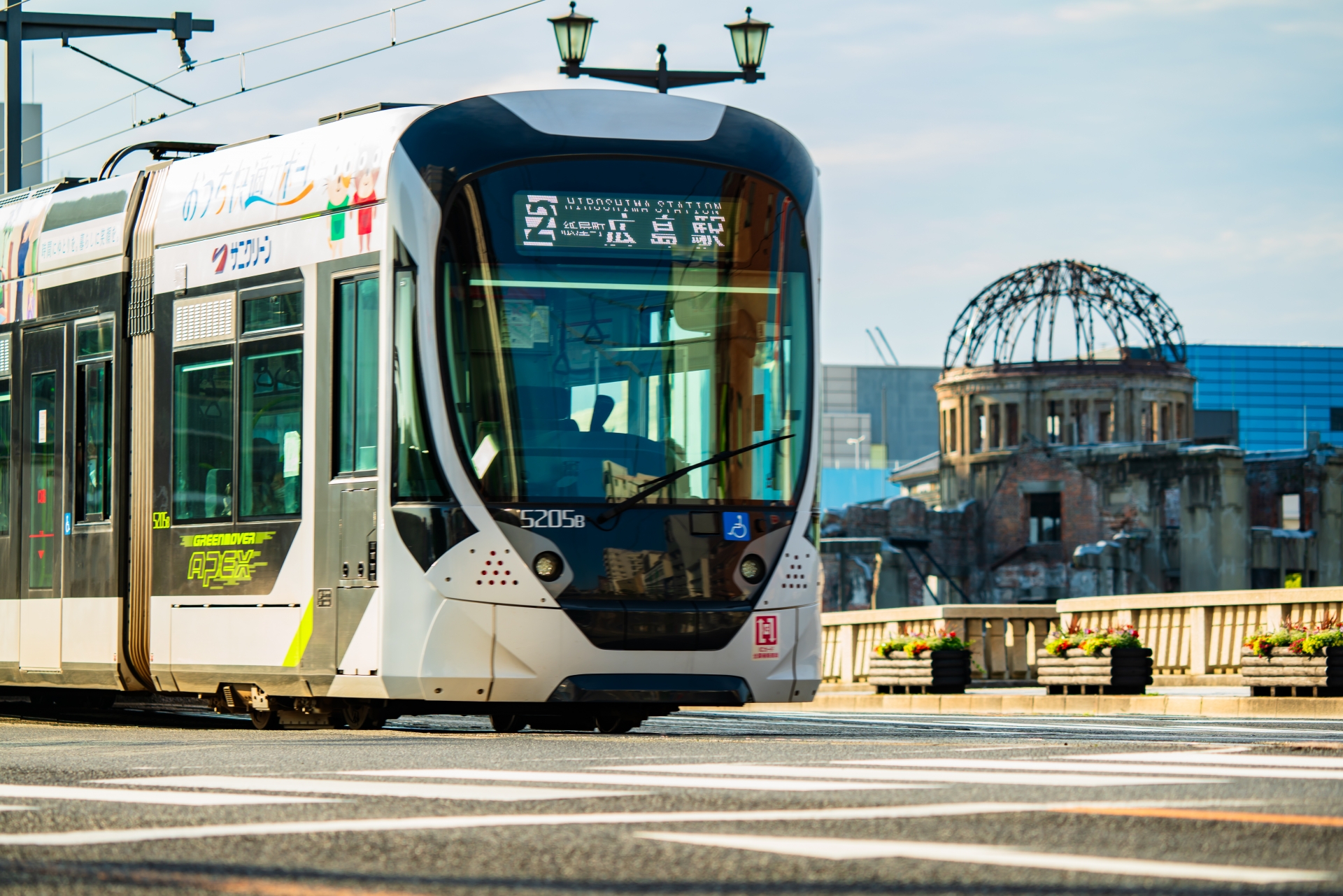

The Floating Torii Gate: Japan’s Iconic View

Arguably the most iconic element of Itsukushima Shrine is its floating torii gate. Standing 16 meters (52 feet) tall, the gate is constructed from camphor wood and sits offshore in the Seto Inland Sea. During high tide, the torii appears to float ethereally on the water, creating a mystical visual experience that has inspired artists and photographers for centuries.
At low tide, the sea recedes and visitors can walk across the wet sand to the base of the torii gate, allowing for up-close encounters and unique photo opportunities. The duality of this experience—ethereal floating during high tide and tactile closeness at low tide—is part of what makes this site so extraordinary.
In Shintoism, torii gates represent the transition from the mundane to the sacred. The Itsukushima gate, standing apart from the main shrine, invites visitors to cross into a spiritual realm. It’s not just a visual spectacle—it embodies the cultural reverence for nature and the divine.
Best Time to Visit Itsukushima Shrine
When planning your trip to Itsukushima Shrine, timing can greatly affect your experience. The tide schedule dramatically transforms the landscape: high tide gives you the iconic floating torii view, while low tide allows you to walk to the gate and explore the shore.
Additionally, the shrine and surrounding island are stunning in different seasons. Spring offers cherry blossoms that frame the shrine beautifully, while autumn dazzles with crimson foliage.
| Month | Tide Condition | Crowds | Photo Quality | Recommended? |
| April | High tide mornings | Medium | Sakura + Floating Gate | ⭐⭐⭐⭐⭐ |
| July | Low tide afternoons | High | Sunset reflections | ⭐⭐⭐⭐☆ |
| October | Mixed | Medium | Autumn colors + clear sky | ⭐⭐⭐⭐⭐ |
| December | Mostly low tide | Low | Peaceful scenery | ⭐⭐⭐☆☆ |
To avoid crowds, aim to visit on weekdays and early in the morning. Ferries begin running around 7:00 AM and the shrine opens at 6:30 AM, providing peaceful moments before tour groups arrive.
How to Get to Miyajima and Itsukushima Shrine
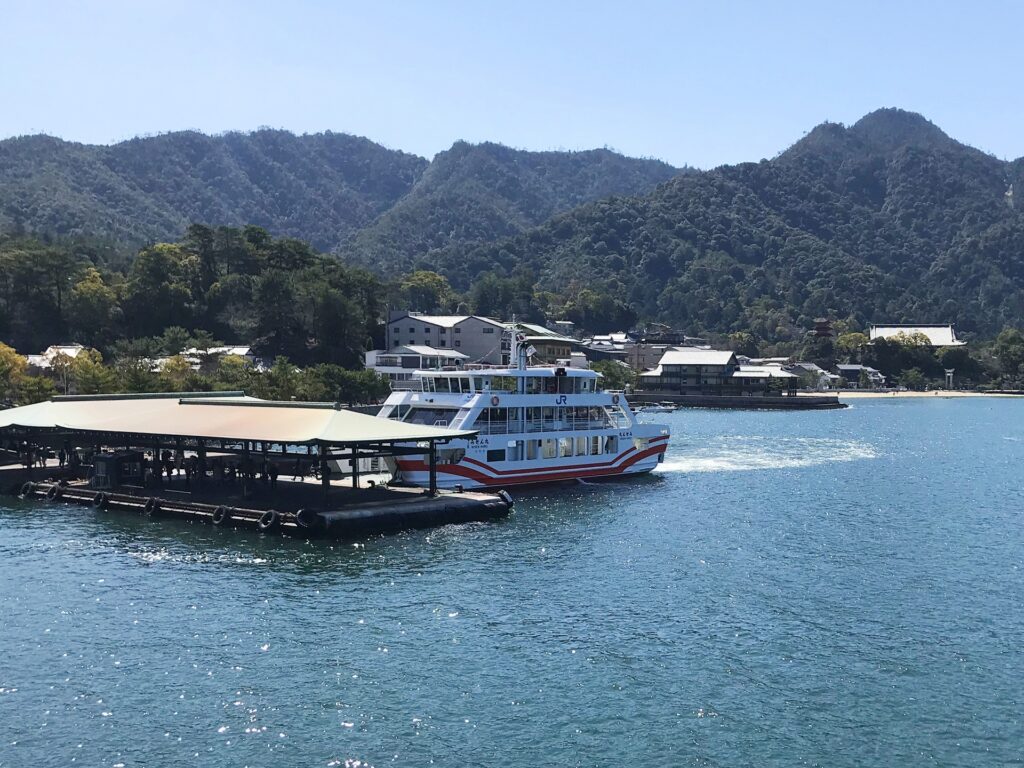
Reaching Miyajima is relatively straightforward from Hiroshima. First, take the JR Sanyo Line to Miyajimaguchi Station (approximately 30 minutes). From there, walk a few minutes to the ferry terminal.
Two ferry companies operate between Miyajimaguchi and Miyajima Island:
- JR Ferry (included in the Japan Rail Pass)
- Miyajima Matsudai Ferry
The ferry ride takes about 10 minutes and offers your first view of the torii gate from the water.
For families or senior travelers, ferries and shrine pathways are generally accessible. Most walkways are smooth, and ramps are available at key areas. However, some parts of the shrine may involve steps. Wheelchair-accessible toilets and rest areas are also located near the ferry terminal and main attractions.
What to Do Around Itsukushima Shrine
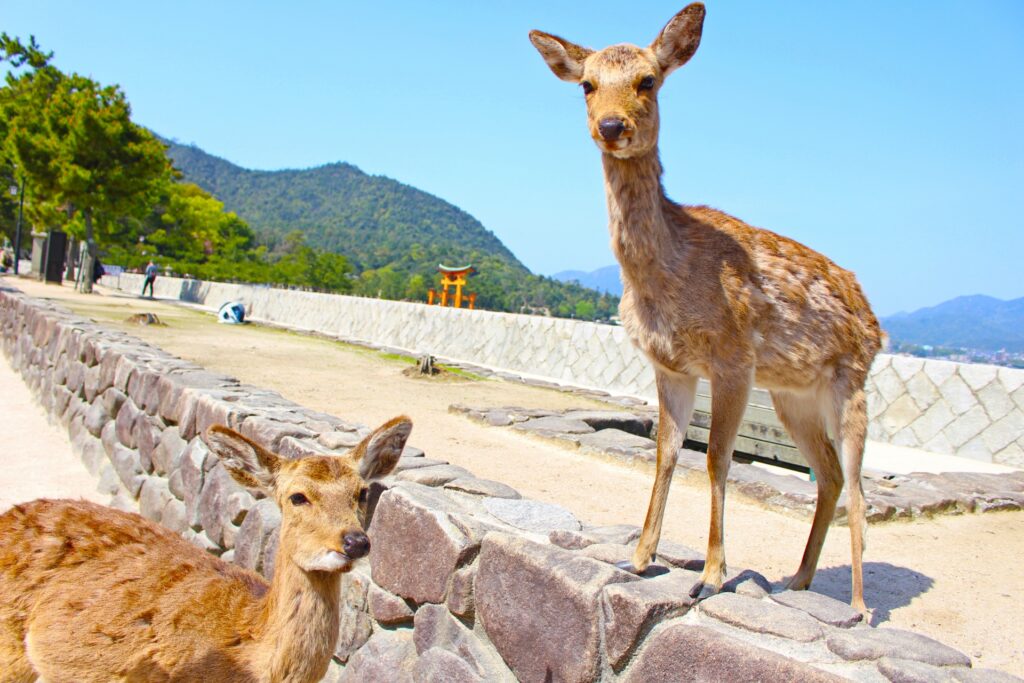
Beyond the shrine, Miyajima Island offers a rich array of cultural and natural attractions. Here are some highlights to include in your itinerary:
- Daisho-in Temple: A serene Buddhist temple with beautiful statues and a peaceful atmosphere.
- Mount Misen Ropeway: Offers panoramic views of the Seto Inland Sea and a trail to the summit.
- Wild Deer Encounters: Friendly deer roam freely and often interact with visitors.
1-Day Itinerary Example:
- Morning: Visit Itsukushima Shrine and torii gate during high tide.
- Late Morning: Hike or take the ropeway up Mount Misen.
- Lunch: Enjoy local oysters or anago (sea eel) rice bowl.
- Afternoon: Explore Daisho-in Temple and shop for souvenirs.
- Evening: Watch the sunset at the beach or catch night illumination of the torii.
Cultural Etiquette Tip: When visiting religious sites, bow before entering, avoid loud behavior, and do not eat or smoke in sacred areas.
Must-See Photo Spots on Miyajima
- From the ferry: Capture the torii gate with the sea and mountains in the background.
- West-facing beach: Best for sunset and high tide shots.
- Mount Misen observation deck: Offers wide-angle views of the island and shrine.
- At night: The illuminated torii provides a surreal contrast against the dark sea.
Photo Tips:
- Use HDR mode for sunrise/sunset shots.
- Wide-angle lens or panoramic settings work well for full shrine views.
- For smartphones, use grid lines to balance the torii in your composition.
Understanding the Spiritual Side of Itsukushima Shrine
Itsukushima Shrine is rooted in Shintoism, Japan’s indigenous spirituality. Shinto emphasizes harmony with nature and reverence for kami (gods or spirits). The shrine honors three sea goddesses, symbolizing protection for seafarers.
Before entering the shrine, visitors perform a purification ritual: rinse your hands and mouth at the chozuya (water basin). This act signifies spiritual cleansing.
The shrine hosts several annual festivals, the most notable being Kangen-sai, held in summer. This ritual music festival involves ancient court music performed on boats, reenacting ceremonies from the Heian period.
Tips for a Smooth Visit
- Dress Comfortably: Wear weather-appropriate clothing and shoes suitable for walking.
- Opening Hours: Shrine is open from 6:30 AM to 6:00 PM (varies by season).
- Ferry Tips: Early morning rides offer fewer crowds and better lighting.
- Admission Fees: Shrine entry costs around 300 yen. Combination tickets with the Treasure Hall are available.
- Apps to Use: Consider downloading “Japan Official Travel App” or “Navitime” for transit and tide schedules.
Accessibility and Travel for Seniors or Families
- Ferries: Wheelchair-accessible with priority seating.
- Shrine Grounds: Smooth stone paths, but some sections have stairs.
- Strollers: Generally manageable, though narrow corridors may require folding.
- Facilities: Baby-changing stations, benches, and public restrooms are readily available near the main street.
Where to Eat and Shop Nearby
- Local Dishes:
- Grilled Hiroshima oysters
- Momiji manju (maple-leaf-shaped cakes filled with red bean paste or custard)
- Anago-meshi (grilled conger eel on rice)
- Shopping Streets: Omotesando Street is packed with souvenir shops selling handmade crafts, calligraphy, and traditional sweets.
- Insider Tip: Try freshly grilled momiji manju from small stalls for an unforgettable treat.
Conclusion: Why Itsukushima Shrine Deserves a Spot on Your Japan Itinerary
From its floating torii gate to its centuries-old Shinto rituals, Itsukushima Shrine offers a travel experience like no other. Whether you’re marveling at the sacred architecture, walking the tidal sands, or capturing the perfect photo at golden hour, the island of Miyajima envelops you in a blend of history, spirituality, and natural beauty.
Itsukushima Shrine is more than a tourist spot—it’s a bridge between the modern world and Japan’s spiritual past. With easy access from Hiroshima, it makes for a perfect day trip or an overnight cultural immersion.
Add Itsukushima Shrine to your Japan bucket list today, and experience one of the most breathtaking and meaningful sites the country has to offer.

